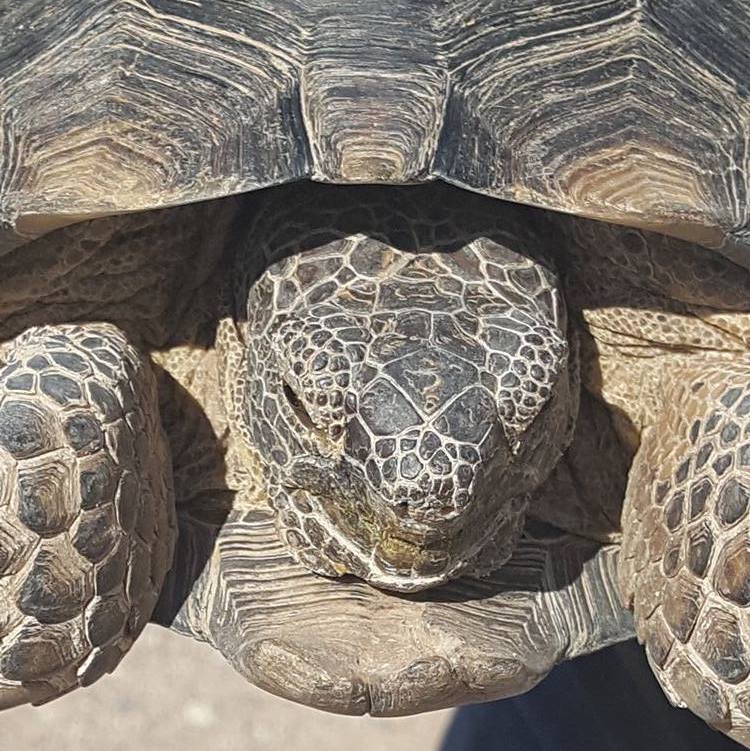A desert tortoise found itself in a built-up area of the town of Parker Wednesday, where it was found by some people going about their day jobs and returned after consulting with Arizona Game and Fish Department.
A few things were learned during the incident:
- There are two species of desert tortoise, one that is native to the east of the Colorado River, and one that is native to the west of the river. When returning a tortoise to the wild, you should be aware which is which and return it to the native side.
- The tortoises live almost as long as humans; 50 to 80 years. Much of their time is spent in burrows and under rocks (95 percent of the time), and they’re mostly inactive. Monsoon season will bring more of them out for the water, but they’re not a common sight.
- Tortoises usually know where they are, and where the food, water and mineral resources are within the range where they roam. Their home range can be up to 100 acres and they’ll remain within that range most of the time, sometimes going beyond into new areas.
- They have a very large bladder that keeps fluid in reserve between rains and can represent up to 40 percent of their body weight. But if they’re alarmed or frightened, the bladder can empty as a defense mechanism, leaving them very vulnerable to dying from dehydration in the dry desert after they’ve been released. If you see this happen, water needs to be provided to restore the fluid in its body (Arizona Game and Fish prefers to be called to handle this themselves).
- For the above reason, Game and Fish says desert tortoises should be left alone as much as possible and not picked up or alarmed by people who see them. Observe from a distance that is safe for the tortoise, so that they keep their bladder fluids and stay healthy. If you need to move it for its own safety, as happened Wednesday, watch for the release of fluids in case it needs special care afterwards.
- There are laws against harming, harassing or possessing desert tortoises, because some species are now endangered after years of human-caused population decline. Biologists have even discovered gunshot wounds on dead tortoise shells. In some areas the population is less than 10 percent of what it was just 30 years ago. However, there is a Tortoise Adoption Program in Arizona for residents of the state who would like to adopt one. Call (623) 236-7202 or email .
- Pet tortoises pose a threat to the wild population, because they’re often different species. So enclosures like fences are very important for pet owners.
This one was released within a mile of where it was found, and should have no problem reintegrating into tortoise society.
 Parker Live News from the Parker Strip since 2009.
Parker Live News from the Parker Strip since 2009.







The Sulcata’s will live up to 150 years or longer and can get up to 200 lbs.